Choose Love, Not Fear

Photo by Stephen Cardinale
By David Barrett, FAIA
Maybe it should be considered one of those bucket list experiences. However it is categorized, I was definitely honored to give the commencement address for the University of Colorado’s College of Environmental Design at the historic Macky Auditorium recently.
What does an archigeezer like me have to offer in the way of words of wisdom?
What to pass on to these enthusiastic designers as they take their next strides into an uncertain future?
My beginning reference was to go back to words even older than me to describe the condition that we find ourselves in today. In 1859, Charles Dickens began A Tale of Two Cities with…
It was the best of times,
it was the worst of times,
it was the age of wisdom,
it was the age of foolishness…
One doesn’t have to look far to see all of these conditions in all their glory. My encouragement to these young creatives was to pay attention and wake up to the larger world around them. Know that, as nature teaches us, nothing operates in isolation. Our lives are influenced by the times and the context that we are functioning in.
The challenges are being defined around us. As problem solvers, these environmental designers are going to be presented with problematic material on which to direct their brilliance. It is “the best of times” in that there is no lack of potential, possibility, or opportunities in what needs to be done. There is so much possibility in this exploding system of entrepreneurism and design thinking that encourages breaking the mold and creating new pathways and forms for living, working and playing.
A sustainable future must not only sustain our environment, but also retain and celebrate our humanness. It will be an age of re-creation, invention and integration. Not that this will be easy, but non-action, stagnation and old stale answers will lead nowhere. Be part of the wisdom and reject the foolishness coming from the mouths of fools. Design spaces, landscapes, cities and architecture that puts the human experience at the center. Balance technology with the “high touch”, as we encourage quality experience and interactions.
Again, I referenced the wisdom of a timeless past in the words of Charles and Ray Eames, the midcentury multi-disciplinary designers who taught, “See the big things in the little things, and the little things in the big things.” I suggest this can serve in two ways.
First, as a design perspective, think holistically. Observe this lesson in interrelationships in nature, and apply this lesson in design. On another level, never think the problems are too large that one can be effective and influence the big issues at hand. We can make a difference as our apparently small acts ripple into the world around us. Do good work and it will contribute positively to that context we are embedded in. Empathetic design is where our intentions and actions go beyond our egos to those we are designing for, and with. It is an act of community. My word of caution is to reject the tendency for isolation and detachment and the “look at me” impulse of the Selfie and technology addictions. Nature knows no Selfie. In the interactive nature of nature, there would only be “Wefies”! Look beyond yourself and act.
My conclusion was simply to be open to imperfection in design and in how we see ourselves and our work. Certainly rigor is a necessity in seeking design resolution, but don’t get stymied in one’s process by the fear of imperfection. As the Japanese concept of Wabi Sabi teaches, there is a beauty in imperfection. Free yourself of the bonds of self-judgment. Lighten up. Take risks. The trap of perfection mentality is procrastination and creative paralysis. More important is to live, and design more from a place of improvisation since we are constantly being confronted by change–tinkering, side trips and spontaneous riffs that are more effective than rigid plans and fixed definitions. Surprise yourself! Live and design with conviction and vigor.
My only guiding light in all of this is the awareness that as we choose, we are always coming from a place of fear or love. Every breath, every design decision, is coming from a place in ourselves that is either contracted or expansive. Just observe your motives and your roadblocks.
Choose love and make beauty.
This is the full text of David’s Commencement address made on Saturday, May 7, 2016
“Thank you and first congratulations to the class of 2016. It’s a pretty exciting time and one of those benchmarks you will always remember. Share it with your parents and your family and as Hillary Clinton once said ‘it takes a village.’ I know I shouldn’t say something political so I guess I have to do something “huge” now to balance that. Really everyone contributes to this success and you contribute to one another. I think that is the nature of studio design programs. It is a rare form of education and we’ve heard from everyone speaking tonight that studio education gives you feedback loops and opportunities to co create and I can tell you that that is what the world of architecture is going to be like. That’s the fun of it. It is an ongoing process of learning and discovering new things.
As the ‘archi-geezer’ tonight; 40 years ago I was sitting in your seat. I was sitting here as a graduate of CU after being at Kent State University in Ohio where on May 4th, four of my fellow students were shot and killed for protesting an unjust war in Vietnam. Those are the kinds of things that shape a life and shape a practice and for me I’m going to challenge you to look at the world as it is today, and find what it is you can make a difference on. It seems like a simple thing but it’s not. I came to CU for graduate school. It was the last time we had an architecture graduate school in Boulder, in 1976. I studied solar energy at a time when we were just learning to talk about something that was not even called ‘green’ yet. It was an impulse to follow nature’s clues and that’s what we’re still trying to do and I hear that and see that in your work. To me, I am really proud of CU because there is something of a higher order that nature has a place here, it’s in your consciousness now and you’re going to take that forward and create from that place.
My senior thesis was a film called ‘ReGenesis’ and it was about bringing the city back and re-energizing it and that has been a movement now that has happened in this country. We now have livable cities again; we have an impulse to move together again instead of continuing to sprawl. Those kind of things that happen outside of yourself, pay attention. We can use Charles Dickens The Tale of Two Cities, ‘It was the best of times, it was the worst of times. It was a time of wisdom and it was a time of foolishness.’ It doesn’t take much observation to see all of that happening before you right now in the world. I’m excited, I trust the future because of you. My son is 22 and a design student, so I live with your generation as well and I’m excited for the world because of you. This became my mantra; try to do things even if they’re little things because here I am in Boulder. I have a practice, we have been 7 people to 17 people; we have been relatively small but passionate like you are right now. Don’t lose that passion. The danger is, you get absorbed into the system and you lose the light you’re carrying right now, don’t let that light go out. Challenge authority and bring good ideas to those firms and those opportunities you’re going to be presented with but don’t back down and become something you are not. Often I go to nature for my wisdom. I guess I’m supposed to have wisdom at 68 but truthfully nature has always been my guide; so I was going to just give you a few patterns in nature, lessons in design but aimed at you and your careers.
This is your design problem right now; design a happy life, design a meaningful life. Let us use the process you learned and try to reframe things. Scale is one of them. Scale is a wonderful thing in nature and there is an elegant dance between the size of the parts and the aggregation of the whole. We see it all around, so keep hiking, keep sleeping on the ground, keep listening to nature for these clues. Human scale will tell you that little things do matter. I’ve confronted this over and over as ‘does anything I do matter’? Does it matter? We are little voice in this big world that we now inherit and we see daily on the devices in our hands. What you do does matter. Charles and Ray Eames had a wonderful quote that we lived by in my studio and that was ‘See the big things in the little things and the little things in the big things.’ That is certainly a design view but it is also a life view of realizing the little thing you do; It’s the interaction you have with another human being, a client you are listening to, be careful around the selfie mentality right now. Nature would only be ‘wefies’, self doesn’t exist in nature and so be careful with that. Love yourself, love your technology but I think you’re going to be the keepers of humanity. How do you keep humanness when you design? How is it in the devices? How is it in the buildings? How is it in the neighborhood? How do you support life as a human? Take that challenge on.
Homeostasis, a great word, is the ability to sustain balance in the face of inevitable change. As Kevin Krizek mentioned, change is all around us and it’s coming on so fast that you have to be careful that you don’t sink your heels in and get stuck in something that no longer has any relevance. Be flexible, be resilient. Learn about re-creation because it’s always going to be available to us. Never give up on learning. Again as the ‘archi-geezer’, the thing I loved about my career is that everyday is a new adventure in learning something. We never know it all, you can never know it all. It’s like climbing in the west. You climb a mountain and you have a false sense of an ascent of a peak and you realize there is a whole other bench beyond me before that peak. This is one of those benches but don’t take this as the peak. The joy is finding those places along the way.
Coopetition is another favorite pattern in nature in that we ride this edge between competition and cooperation. Nature does that all the time, it’s finding a balance. I feel we take coopetition mainly from the side of empathy, passion, community. Again it’s not the selfie it’s the ‘wefie’. There is so much work to do for others out there; the danger is that we only serve the rich, which has been a challenge in Boulder. The truth is there is a whole world out there in need of design. So be bold, go out there in the world, travel, sketch, meet people, try out other cultures in design and look for opportunities to make a difference.
In eastern philosophy ‘wabi-sabi’ is imperfection, the beauty of imperfection. I think that one of the great dangers in the world, it certainly amped up with the world of technology and the computer, is the computer in design. Imperfection is beautiful so don’t expect to have the perfect answer. That’s the fuel for paralysis by analysis. Lighten up, take risks, free yourself and lead by action.
Improvisation. The idea of improvisation is that what goes on in the world of design. We tinker things into existence. The beautiful things don’t happen by one grand brilliant moment. There are those moments but typically it’s tinkering and trying things out and getting the feedback loop. Taking side trips, spontaneous rifts that occur because you have gone out on a limb. Be open and allow yourself surprise, have a good time. I think it’s too easy to become overly serious in design. It’s hard work. It’s like baseball, you fail two out of three times and you’re in the hall of fame. Design is very much like that, we fail often but then the work eventually leads us to a solution.
Celebration is the last one I’ll talk about and that is what we are doing today. You see it all through nature, the celebration of the aspen grove and the colors that one sees. My sense is that we have to pay attention by actually listening to nature and now the selfie occurs. Go walk in nature, hike, lay on the ground, fall in love over and over. Biophilia is a good thing, very good thing. E. O. Wilson, the love of the living, it’s all about love.
One final thing as the ‘archi-geezer’ who has been in Boulder for 40 years, so I’m putting my cards on the table. That idea that every moment, every design decision is a nano second series of decisions where you’re choosing between love and fear. It’s true. Try it out, watch yourself in the decisions you’re making. Am I coming from fear or am I coming from love or we might call it trust. Have a good time, love a lot and I look forward to the world you’ll create.
Thank you.”

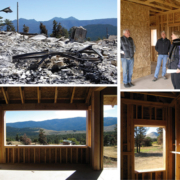
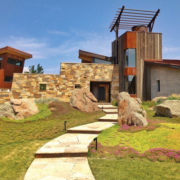
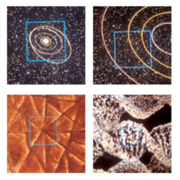
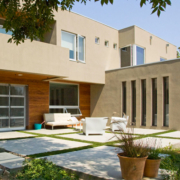
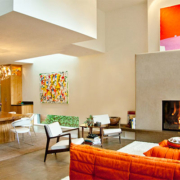
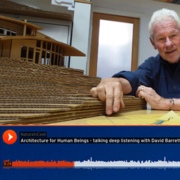














Leave a Reply
Want to join the discussion?Feel free to contribute!